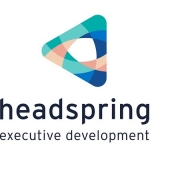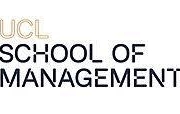How is the Four-Day Week Shaping Workplaces?
The decrease in working hours is a global trend that started in Europe a few years before Covid-19 but intensified during the pandemic.
According to Perry Timms, author of Transformational HR and The Energized Workplace, and founder of People and Transformational HR Ltd, it was mostly the exhaustion felt after trying to recover from lost work during the pandemic – and a long-standing belief that five-day weeks were a barrier to career progression for working caregivers – that made them decide to implement a four-day work week.
“We wanted more focus from being rested to save our enterprise and bring more balance to our mainly part-time team. In short, modelling a new way to slice and dice the working week,” he explains.
Adam Kingl, educator and author of Next Generation Leadership, explains that the reason why companies are adopting a four-day work week is because they need to respond to employees’ increasing requests for greater work-life balance. “A demand for work-life balance isn’t a cry for fewer work hours – it’s a cry to be able to work from outside the office beyond a rigid 9-5 schedule,” he says.
Jordan Lorence, Marketing Manager at MRL Consulting Group, clarifies that in the case of his company the four-day week started out as a strategy to improve recruitment and retention internally. They had many other incentives in place before the four-day week but they wanted something to bring it all together.
“Our best people would want to continue to stay, and recruiters would want to work for us. There was also the wellbeing side of things; our team would be refreshed, happier, healthier, and we’d all enjoy our time in the office more as a result. Many of our team have children, so giving them back time would be really important,” he states.
Claire Daniels, Chief Executive Officer of Trio Media, explains why her company is taking part in the 4-Day Week Pilot Programme in the UK. For her the motive was around productivity. As a growing business, she wanted to see profits increase and so was open to anything that could allow her organisation to get the best output from their people.
“I think companies generally are implementing it, as they are intrigued about how to build a workplace for the future that has a balance between performance and employee wellbeing,” Claire states.
Providing a better work-life balance
Jordan Lorence suggests that the work-life balance was one of the main reasons for bringing in the four-day work week. Every employee has every Friday off. No hours are added on to make up time, no loss of pay or commission, just one day less in the office. That extra day is for the team to do whatever they want with. “We felt like that was the best balance to offer – we already have flexible working in place, so to give back one whole day was the next best thing to add,” Jordan explains.
Claire Daniels clarifies that an additional free day per week gives people the opportunity to get a lot of life-admin done, along with spending more time with their family or friends. She noticed that some employees have even started volunteering or learning a new skill.
Perry Timms explains that the four-day work week is an awesome way to do what he refers to as ‘2×2 day working sprints to their work’, with flexibility all around it. “If we have to flex for client work, we trade the time/day. And with families, life-admin, hobbies and other pursuits, we no longer feel these have to be crammed into a weekend,” he states. Accordingly, they don’t have a work-life balance, they live a balanced life which includes their work. Noticeably, their culture, positivity, support, creativity and work volumes have all increased since they took this decision. They’ve cut out bureaucratic clutter and they’re now being asked to help others create new capacity in the way they did.
Impacting productivity and performance
Claire says that the impact on productivity has definitely been positive, in that their workload has increased and they have been able to keep up with demand even in fewer hours. The performance speaks for itself: in the five months they’ve carried out the trial, they performed 49% better financially than in the same time last year, and 30% better financially than the previous period. They’ve also had two record sales months since they’ve been operating their four-day week.
Perry confirms that this work schedule has had a huge impact on employee productivity and performance. They’ve had two years of sustained growth with 20% fewer hours “on the clock”. When they tracked this over the last two years, they were able to pin it down to efficiencies, clarity and attention to what makes things swifter without being breathlessly fast.
“We’ve crafted intelligence and information creation, storage and retrieval that is very optimal. Our communication, learning and social time have increased, not decreased. Overall, our culture of performance is far more optimal because we’ve sharpened in every area possible,” Perry explains.
At MRL Consulting Group, and according to Jordan, they’ve had their best financial year in 25 years of business, with 60% of the headcount they had when they established the previous record. This was set before the financial crash in 2008, so to say the business environment was also different back then is an understatement.
“We’re now doing more work in less time, so using the four-day week formula, productivity has certainly improved. We stopped looking at inputs (time spent in the office etc.) and started looking at outputs (calls made, interviews scheduled, placements made etc.) and it helped us to focus on the things that really matter. People are happier, more energised and focused for four days, so they tend to get more out of those four than they would have out of five days,” Jordan clarifies.
Increasing employee engagement
Adam Kingl explains that when he was surveying hundreds of high potential Generation Ys (who represent over 60% of the global workforce) for his book Next Generation Leadership, he found that work-life balance is the number one condition that such HiPos seek from their employers. So, a four-day work week could be a major initiative to improve employee engagement and reduce attrition among the largest generation in the workplace.
For Jordan, engagement has really improved for everyone. He suggests that when employees know they have less time to do something, they tend to focus more on their work. There’s then the other side of it where, when they feel appreciated as a person and they’re given a proper work-life balance, they’re happier at work – and happier people tend to be more engaged.
Claire believes employee engagement has increased at her company, although this isn’t a metric they currently measure. Due to the reduced working hours, they’ve also made an effort to organise more social activity outside work to help work relationships continue to flourish even in reduced working hours.
The conditions of success of the four-day work week
Claire explains that in order for the four-day work week to succeed they had to do a lot of planning. For her, open communication and transparency are key to safeguarding the business against any of the challenges. Equally, bringing in several new systems and processes to ensure the success of everyone on the trial helped in their case.
For Perry it is important to socialise the idea first to test belief in the option. The socialisation of work doesn’t mean a slower process and the need for consensus; it means respect for the process and clear lines of accountability.
He believes equally that a company must purge bureaucracy – especially the time spent in meetings – and instead create open, transparent processes, communications and decision-making that are focused on impact and positive outcomes. “Then measure, sense-check and narrate culture into prominence, creating a psychologically safe place to pursue prosperity – not meaningless KPIs and targets. Less time, better work,” he concludes.
According to Adam, organisations should still seek clarity about what their employees mean or want when they request ‘work-life balance’. In some cases, they seek to work fewer hours, in which case working, for example, 10 hours a day for four days a week may not yield fewer hours. But in other cases, employees might seek greater flexibility in where or how they work, and having three days when they are not obliged to work may provide this.
“It all would depend on the individual’s circumstances as well as the employer’s truly giving the employee the freedom and flexibility, including not intruding on their ‘fifth’ day off,” he concludes.
The four-day work week, if implemented well, seems to be a promising model that companies are heading towards. So far it has shown very positive results: improvement in the wellbeing and performance of employees, increase in productivity and engagement.
Is this not what every company aspires to? Is it not in line with what employees are requesting when they speak of a better work-life balance? Perhaps it is time for more organisations to consider it so that it becomes a new norm in modern workplaces.








